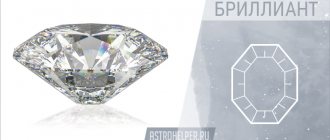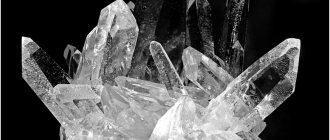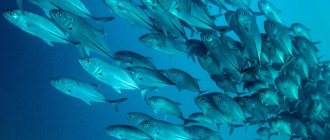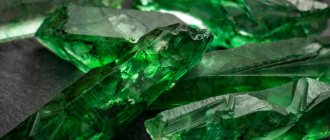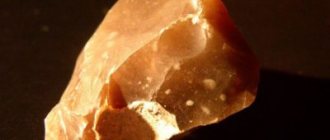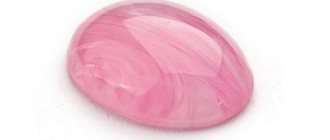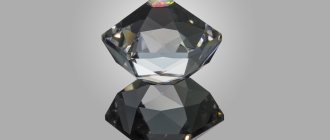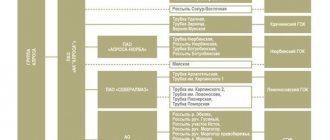The Russian Federation has been actively mining gold since the early 19th century. We use our own wealth to replenish our gold reserves and continue the industrial production of various products from precious metals. It was in the 19th century that currency circulation included minted gold coins, which today have turned into souvenir jewelry. Therefore, the “yellow breed” is of strategic importance for the Russian economy and the economies of other countries.
Today Russia ranks third in terms of gold production. China is in first place, Australia in second. Every year, reserves of valuable metals are replenished by 250 tons, which has a positive effect on the economic situation. If we take into account the information of geologists, our country contains more than 380 primary and about 5,100 alluvial sites where gold mining . Some of them are included in the reserve, the rest are already actively used.
In this article we propose to talk about how and where gold mining occurs in Russia , what methods of extracting the “yellow metal” from the bowels of the earth are known. Let's get started!
Natural resources of Russia: the largest reserves of natural resources in the world
Russia is the state with the largest territory.
Our ancestors fought for it for hundreds of years in order to leave it to us - their descendants. Borders and their protection are primarily a matter of survival of the people in the territory. The forefathers also took care of our well-being - the Russian territory is a storehouse of natural resources, which is the foundation for a powerful economy, and therefore a standard of living. The dictionary of definitions tells us: natural resource potential is a set of natural resources that are the basis for the economic development of a territory (country).
Section materials
January 18, 15:52
A three-level interactive museum of geology will appear in the Altai Territory
August 30, 12:21
Generals of ore quarries. How the Russian mining complex developed
July 27, 12:44
The Russian authorities plan to develop the country's mineral resource base
March 03, 13:43
The drone is gaining altitude. How drones are used in geological exploration
November 24, 13:24
Part of the territories of St. Petersburg and the Leningrad region will form a geological park
Russia's natural resources are controlled from London and managed by offshore companies
We see today the development of the Russian economy, but in the 90s Russia stood on the brink of an abyss and the echoes of those events prevent development today - we still have onerous obligations to the West and the United States spelled out in our main law - the Constitution.
There is a problem of Russian control of most mining enterprises - they are foreign owned and outside Russian legislation.
For example, in 2022, the English court divided Russian aluminum between the Deripaska spouses, and part of their shares recently passed into the possession of the English lord. And don’t let the English names of the companies in the transactions confuse you - these are the parent offshore companies of our enterprises.
Berezovsky and Abramovich also sorted things out in London, and the board of directors of Rosneft does not consist of Russian names. This is what is widely known and just the tip of the iceberg.
This happened in the 90s as a result of privatization. For reference, we note: Great Britain is a vassal of the United States, living (and always living) at the expense of the colonies.
For many years, Vladimir Putin came to the oligarchs at the annual congress of industrialists and suggested that they transfer their property to Russian jurisdiction, but the factories are still there.
The RSPP took place in an expensive American hotel (Ritz Carlton) in the very center of Moscow. Foreign celebrities, including the President of the United States, stay here. Those. the choice of location is filled with American symbols.
After the 2022 amendments, industrialists came to the Kremlin to see Putin (and not vice versa), and the conversation took on a more categorical character - Russia’s agreements with a number of countries on the avoidance of double taxation are unilaterally cancelled, when they mine here and pay “there”. Thus, the corridor for withdrawing funds through offshore companies is forcibly closed - taxes will have to be paid in Russia.
The process is slow - there are long-term contracts and obligations (for example, of a collateral nature) ... But the millstones have turned in the direction we need. Their design is legal, i.e. built on laws, agreements and accepted rules. And whoever breaks the rules is exposed to blows.
Until the 2022 referendum, the European Courts were the highest authority for any dispute in Russia. This status remains in our Constitution in Article 15.4 today. Amendments to the Constitution gave some room for maneuver.
Hope strategy
— Do your cards come out on paper?
— Yes, it’s convenient to work with them: you can see not a mosaic picture, like on a computer screen, but cover a significant area with your gaze. They are published in the form of a set of geomaps (albeit in a small edition) by our division, the St. Petersburg Cartographic Factory. In addition to these, it releases a disk with electronic data and an analytical note: a separate detailed appendix.
Every year we publish up to one and a half dozen “collections” of million-scale maps and about 30 - 40 two hundred maps intended for specialized universities in the country, research centers and government agencies responsible for subsoil use. It doesn’t seem like much, but the preparation of one such specimen, it’s worth considering, lasts several years...
— You look to the future with optimism. What is it based on?
— The shortage of personnel in the industry, as before, is no longer felt: many young geologists come who are not afraid to go into the field and easily master new technologies. Well, besides, the problem outlined above is on everyone’s lips.
Russia is rich in resources, and it is necessary to more actively reproduce SMEs in the most popular positions (hydrocarbons, rare and precious metals, tungsten, uranium, etc.), develop technologies for the extraction of high-quality raw materials, their processing and enrichment. But this is obvious not only for us: the need to strengthen regional exploration of subsoil resources is spelled out in the recently updated Strategy for the Development of SMEs in Russia until 2035. I think that measures will be taken at the government level to improve the situation.
#geology #minerals #raw materials
The material was published in the newspaper “St. Petersburg Vedomosti” No. 091 (6444) dated May 23, 2019 under the title “When paper is not a hindrance.”
Share on VKontakte Facebook
Cool
Who owns oil and other subsoil and natural resources according to the Constitution?
According to the current Constitution, Russia's natural resources, including oil, gas, gold, coal, etc. do not belong to the people represented by the State - the subsoil can be owned and disposed of by anyone. I bought a drilling rig for next to nothing in the 90s and pumped Russia’s oil: this was the case until 2004 (especially) and continues (to a lesser extent) to this day. This cannot be prohibited by any decision, because it will be contrary to the Constitution.
The robbery of Russia through the export of subsoil and natural resources is today permitted by law - who owns the subsoil and natural resources of Russia according to the 1993 Constitution is determined by Article 9, paragraph 2:
«Land and other natural resources can be in private, state, municipal and other forms of ownership.»
Vladimir Putin reduced the volume of natural resources exported “for free” by the oligarchs by 3 times, canceling the so-called “Production Sharing Agreement” (PSA). However, this is a half-measure, since according to the Constitution, the subsoil and natural resources of Russia can belong to anyone. Those. the problem is serious - if Russia weakens tomorrow, the President will change and everything will roll back.
The struggle for influence and mineral extraction is the most serious. On the side of the people - Putin and a small team of national forces in power with some administrative resources - on the other side, the owners of enterprises (aka industrialists, oligarchs) with control of millions of jobs in Russia, controlled from the United States and constituting the so-called “fifth column”.
On command from the United States, the oligarchs in Russia can “twist the arms” of millions of citizens: create total unemployment, organize disruptions in food supplies, multiple increases in prices, for example, for metal and gasoline, etc., which will instantly knock out the support from under the President in the form of the people’s trust.
The interests of the oligarchs are located in the same place as the registration and pledges of their enterprises, and often their families, i.e. not in Russia - this is a tool for external control of the fifth column. Of course, there are also patriotic industrialists, but they are not enough to form a counterweight. Therefore, the national leader acts carefully and step by step, taking a step back somewhere and then taking two steps forward.
Struggles and debates about natural resources are taking place at the highest level.
At a plenary meeting on February 6, 2022, State Duma Speaker Vyacheslav Volodin said:
“If the subsoil belongs to the people, then register this quarry, get a license, and then what you want to do is bridge the road, or if you want, do something else. We are for the fact that the mineral resources belong to the people , but a license must be obtained. And this is all reflected in the Constitution and laws.”
This is how the speaker commented on the speech at the plenary meeting of the leader of the Communist Party of the Russian Federation Gennady Zyuganov - who reminded the deputies of paragraph 2 of Article 9 of the Russian Constitution: “We are the only country in which the Constitution allows you to sell off mineral resources.”
.
After which Volodin recalled that at the beginning of 1991, when the USSR was collapsing, the Communist Party of the Russian Federation did not support the transfer of oil companies into the hands of the state: “Previously, the oligarchs received income from the subsoil. Then the president introduced an initiative so that our excess income would flow into the state. Which factions voted? Now we remember about the subsoil, we remember about the income that is going away. So these incomes were returned to the ownership of the state.”
, - Volodin Zyuganov stopped short.
Classification of gold deposits
There are 2 types of locations:
- indigenous;
- placer.
Indigenous, also known as primary deposits, are part of the magma ejected to the surface of the earth. Often golden metals are found in the form of nuggets. But there are pieces fused with other elements of the periodic table: copper, quartz, iron, sulfur. Just a larger percentage of mined minerals are located in primary places.
Placer (secondary) places where precious metals appear are formed during the destruction of primary deposits. These can be air currents, exposure to water, temperature changes, and even the results of bacterial activity. Until the end of the 19th century and the beginning of the 20th century, valuable rocks from placer formations were purified by grinding. Light alloys were washed with water, and the remains were melted into ingots.
How to return Russia's natural resources to the people?
To eliminate the status of a colony, we need to completely change the Constitution: change chapters 1, 2 and 9. They contain the above-mentioned articles 9 and 15, and their editing is prohibited. The edition after amendments to the Constitution on July 1, 2022 is the Constitution of the transitional period - from a colony to a sovereign state.
There is a high probability of a change in the Russian system during the current convocation of the Duma, i.e. the next 4 years. There is no more time - America is attacking, and we have limited rights and means to respond...
Everyone's participation will be required, because... The Constitution is our passport in the world community: what is written in it is what we are for other countries, and the main law of the country, in which every word directly affects the lives of citizens.
79.9% of Russian citizens supported amendments to the Constitution in a popular vote (plebiscite) in 2022. We hope that the President will soon announce a referendum on the adoption of a new sovereign Constitution of Russia. Let's support!
For the same rake...
— Don’t they see these distortions “from above”?
— I wouldn’t dramatize: the leaders of Rosnedra are trying to change the state of affairs, preparing legislative initiatives. Another thing is that such a situation already arose during the Soviet era, when, carried away by prospecting work, they rushed to discover deposits, but forgot about the initial stage. In 1954, a resolution of the Council of Ministers was issued, where the state, having admitted the mistake, outlined measures for correction. It turns out that we are stepping on the same rake again.
However, regional geological study of the subsoil cannot be underestimated. This was discussed by the head of Rosnedra, the deputy head of the Ministry of Natural Resources of the Russian Federation, Evgeny Kiselev, and other participants in the recent all-Russian meeting on mapping: such discussions take place within the walls of our institute once every two years.
— Are there still blank spots on the geological map of Russia?
— Million-scale surveys cover its entire territory, and there are clearly not enough digital maps, indicating more thorough geological knowledge. We cover less than 1% of our country's area with them every year. Meanwhile, the potential of many regions, when it comes to the reproduction of SMEs, is far from being tapped. The subsoil of the North-West, in particular, is rich in gold ore occurrences, there are also diamonds, copper, and hydrocarbons (Timan-Pechora province). The Arctic land and shelf areas are quite promising in this regard.
The study of some territories is also taking place within the framework of international projects, which involve the construction of maps of the Asian part of the world, the Caspian region, the Baltic waters and the world's largest freshwater Lake Baikal. The Arctic is also not well studied, but, receiving more and more licenses there, large companies undertake obligations to fill this gap in their areas.
Natural resources of Russia: subsoil reserves are the wealth of the nation
Russia is extremely rich in natural resources and ranks first in the world in proven reserves of natural gas, iron ore, coal, asbestos, zinc and other minerals. All types of mineral fuels are produced in Russia, the bulk of which are oil (including gas condensate) and natural gas.
In 2022, the Ministry of Natural Resources and Ecology of Russia (Minprirody) for the first time assessed the mineral reserves in our country in monetary terms.
- The value of oil reserves amounted to 39.6 trillion rubles;
- gas cost - 11.3 trillion rubles;
- coking coal - almost 2 trillion rubles.
- iron ore - 808 billion rubles;
- diamonds - 505 billion rubles;
- gold - 480 billion rubles.
- oil reserves - 9.04 billion tons;
- gas - 14.47 trillion cubic meters. m;
- gold - 1407 tons;
- diamonds - 375 million metric carats.
The total value of all mineral and energy natural resources (oil, gas, gold, copper, iron ore, thermal and brown coal, diamonds) amounted to 55.24 trillion rubles, or 60% of GDP for 2022.
The value of Russia's natural resource reserves in monetary terms plays a huge role in securing the national currency. After the return of state sovereignty, the national ruble will be able to become the most secure and, therefore, the most stable currency in the world.
Processing methods
Methods for extracting this precious mineral have changed over the centuries. At first, people found springs on the banks of rivers and lakes and sifted sand through a fine sieve. There were grains of gold left in the container. Then they learned how to extract material from ore. Modern technologies make it possible not to use the manual method, since all processes have long become mechanized.
The choice of extraction methods depends on the type of deposit. If it contains three grams of gold per 100 kg of starting material, then this is considered a normal indicator. If 10 g is detected, the source is called rich.
Recently, the amalgamation method has begun to be used, in which mercury is placed at the bottom of a deep barrel, and then gold-bearing rock is added and shaken. At the end of the procedure, pieces of the precious substance stick to the bottom of the container. But they note a significant drawback of this method - the high toxicity of mercury, which negatively affects human health.
Therefore, they began to extract gold from ore using sodium cyanide. The substance is capable of completely converting even the smallest grains of metal into water-soluble chemical compounds. This method allows you to obtain minerals even from abandoned sources, turning them into profitable deposits.
It is convenient to use dredges—floating mining machines—to search for gold. They are specially equipped to extract precious minerals from the depths of the earth. The mechanisms also enrich minerals and remove waste rocks from the soil. It is these three methods that are used in gold mining in the Russian Federation.
Areas of application
According to statistics, almost all reserves of the extracted substance are used as gold reserves, which are listed on the balance sheet of the state. Most are kept in commercial banks as deposits and investments. A certain percentage is owned by private individuals who mine or collect jewelry, antiques or money. Only 10% of the total amount is used in industry to create equipment, clothing, furniture and other general consumer items.
If we take electrical engineering, gold is used to make an insulating coating for contacts, inputs and connectors, and is also used as solder. Many metals can be carefully gold-plated to protect against corrosion and bacterial damage. This substance is also considered a food additive, so it can be used in the food industry.
If someone didn’t know, then you can’t do without this substance even when creating ordinary glasses. A thin film is made from it, which is a protective layer against infrared radiation. And if an electric charge is passed through this film, the glass will acquire useful anti-fog characteristics. Such glass is used to create ships, cars, aircraft, steam locomotives and other vehicles.
The substance is also used to make dentures for teeth, as well as crowns. It is added to some medications. The material can be found in many cosmetic products that are designed to rejuvenate and improve skin condition. But, as already mentioned, most of the money is spent on creating jewelry, which may differ in size, shape, quality, purpose and cost.
The description provided in this article will help you learn about the characteristics and properties of the valuable mineral gold.
Physical and chemical properties of gold
Gold itself is a very soft metal by nature. It is very easy to scratch, and to avoid this, stronger metals are added to the composition at the time of jewelry production. For example, silver, copper or platinum. But the melting point of gold is more than a thousand degrees. This metal is also very ductile, which allows it to be forged into sheets with a thickness of only ~0.1 microns. This is called gold leaf. It also conducts heat well and is often used in cables.
Gold comes in different colors: just yellow, yellow with red shades, lemon yellow, white, pink, green and even blue. It depends on the composition of the metal. If you mix gold, silver and copper, you get yellow color. With more copper, the alloy will give a red tint. And if you add more silver, the mixture will turn lemon-colored.
We want to live beautifully
PS Some 150 years ago, it is believed, the industrial revolution began on the planet. Just one hundred and fifty years ago... Or two generations of humanity...
What have we managed to do already? The appearance of cities is radically transforming, landscapes are rapidly withering away, ecological connections are collapsing, as if on command, at the poles and in the depths of the continents, showing premature bald spots of old age.
Nobel Prize winner in physiology and medicine, Austrian zoologist Konrad Lorenz bitterly warns: “Man has forgotten how to properly deal with living nature. It is now easier for him to deal with technological processes and technology in his work life. It is with this standard that he approaches living nature, thereby causing it irreparable harm.”
A century of frost is not to be seen
We little know what exceptional wealth the Russian people have. Even less - how to dispose of it. That is why we often lose on the world market.
The Russian North is fabulously rich. But “sesame” will not open just by our spell. And from two “sesame”, and from three... Having once learned what water is and that in a frozen state it is lighter than itself and floats, we decided that the key to those riches was in our pocket.
But in the North, in the tundra, water behaves unpredictably. Bedrock permafrost grows (accretes) not downwards, but upwards. So it was and is forever and ever. And this can put us... no, not upside down, but in front of an unsolvable riddle. Moreover, this is not a side fact, but one of the roots of the global problem, since more than half of the Russian territory is captive to permafrost. More than a half. By the way, Baikal also lives on permafrost. And please don’t think that I’m trying to intimidate anyone, just be more attentive to nature. To our cosmic nest, which brought us - boogers and slugs - into people.
The warming of the climate, which some scientists seem to be recording, threatens us not with polar palm trees, but with a catastrophe similar to those that caused the extinction of the dinosaurs. No, nothing will fly to us from space to lead the Earth astray from the true path, hellish dungeons will not explode... We ourselves will slowly, little by little let the genie out of the bottle, and he will... Then the Earth will begin to do without us. We don't want this.
Pulkovo Astronomical Laboratory of the Russian Academy of Sciences, Doctor of Physics and Mathematics Khabibullo Abdusamatov:
— The dominant driver of climate change is two-century variations in the size and luminosity of the Sun. And today humanity should fear not catastrophic global warming, but a deep cooling like the Little Ice Age of the 14th-19th centuries. And now,” the scientist develops his thought, “after several years of steady cooling, a phase of instability has begun, when the temperature will fluctuate around the reached maximum, without further increasing significantly. Changes in climate conditions on Earth will occur unevenly depending on the latitude of the place. We can observe this weather pandemonium today not only in our country, but also in other countries - this is how the climate changes, relatively speaking, from “warm” to “cold”.
The author is not alone in his forecasts. Academician Vladimir Melnikov, director of the Institute of the Earth’s Cryosphere of the Siberian Branch of the Russian Academy of Sciences, referring to thousand-year data (a diagram of the Earth’s temperature changes over 12 thousand years), states: “Today we live in an interglacial period, that is, in a warm period, which, by the way, is coming to an end . I’ll say more, 6 thousand years ago the air temperature on Earth was higher on average by more than three degrees, and this was the heyday of the first Sumerian civilization.”
Yes, today there is slight warming, but why is it called global if 700 years ago, during the era of Genghis Khan, it was warmer than now? Then came the Little Ice Age, which ended only in the middle of the 19th century. Since then, we have seen an increase in temperature every hundred years, but it is very smooth... But this is not global warming - it is a leveling off, a return to the levels that were before the Little Ice Age..."
Academician Mikhail Aleksandrovich Grachev expressed a similar point of view on “global warming” in “Baikal” publications on the pages of “Rossiyskaya Gazeta”, being the director of the Limnological Institute of the SB RAS.
Among scientists there is also a complaint against us, journalists: it is we, they say, who raised the high, especially our foreign colleagues - a global tsunami is coming and is catching up with the melting of the polar ice caps. They did not listen to those scientists who proved the opposite. And they did not publish their forecasts.
But... After 2013, they suddenly became silent. Only the “girl on bail”, like a pike, flops around the world, frightening us with death at the end of the tunnel. And he collects good fees so that they don’t drown in those waters. Scientists have published the latest results of their research.
From 1998 to 2015, all forecasts went bankrupt. Temperatures were predicted to rise by more than 2 degrees over the next century. And the current temperature increase was 0.04 degrees Celsius.
The current coronavirus pandemic has distracted us from the cold and frosty winter. In Europe, Russia, and America, it greatly cooled down hotheads.
Even earlier, our scientists drilled a four-kilometer borehole in the ice shell of Antarctica: they obtained water samples from a subglacial lake and an ice core. Research has shown that temperature cycles on Earth repeat themselves every 100 thousand years.

